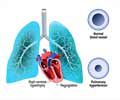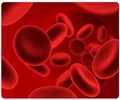Treatment of Deep Vein Thrombosis (DVT)
Deep vein thrombosis often requires anticoagulation or blood thinning therapy. Warfarin (Coumadin) is the drug of choice for anti-coagulation.
Superficial blood clots are cured with warm compresses, leg compression, and anti-inflammatory medications such as ibuprofen. Deep vein thrombosis often requires anticoagulation or blood thinning treatment. Anticoagulation prevents further growth and propogation of the blood clot. It also prevents the development of the deadly complication called pulmonary embolism.
Warfarin (Coumadin) is the drug of choice for anti-coagulation. The drug takes some time to initiate its action. Hence a drug called low molecular weight heparin (LMWH, e.g. Enoxaparin) injection is administered at the same time when warfarin tablets are started. It is referred to as a ‘bridge therapy’ that acts when warfarin is getting ready for action. Patients receiving this therapy will have to undergo routine blood tests (prothrombin time or INR (International Normalized Ratio). This is very important. Not all patients are fit for anti coagulant therapy. Bleeding in the brain, major trauma, or recent significant surgery are contra indications.
The technique called thrombolysis or breaking of the clot does not have convincing proofs of efficacy.
Vena Caval Filter: A filter is placed in the major vessel called inferior vena cava. It helps in preventing clots from reaching the heart and lung. The filter is not devoid of complications though.
Surgery is a rare modality used in the management of DVT. People who cannot take anti-coagulation therapy or who developed recurrent blood clots while on anti-coagulant medications may benefit from surgery.

















